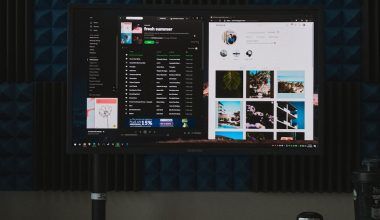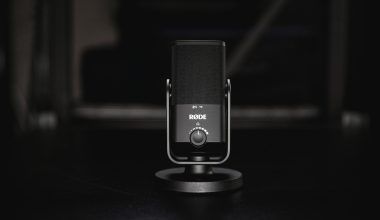Deliver My Tune has become a popular platform for independent artists, labels, and content creators seeking to distribute their music and videos across major digital platforms. As a one-stop solution for music distribution, it enables users to reach global audiences on services such as Spotify, Apple Music, YouTube, and more. If you’re looking to distribute music videos through Deliver My Tune, understanding the accepted formats and technical requirements is crucial to ensure a smooth submission process. This article will delve into the various video formats accepted by the platform and provide detailed technical specifications for submission.
The Role of Video Distribution in Music Promotion
Before diving into the specifics, it’s important to highlight why distributing music videos effectively is a key part of an artist’s promotional strategy. In the modern music industry, video content is more than just an add-on; it’s a primary tool for audience engagement and artist branding. Platforms like YouTube, Apple Music, and Tidal are heavily video-driven, with music videos serving as a powerful medium to showcase an artist’s creative vision, connect with fans, and even increase streaming revenue.
Given the impact that music videos can have on audience growth and revenue streams, it’s essential to meet the technical standards set by distribution platforms like Deliver My Tune. Failing to meet these requirements can lead to delays, rejections, or compromised video quality that may detract from your brand image.
Accepted Video Formats on Deliver My Tune
When submitting videos for distribution, Deliver My Tune supports several industry-standard formats. These formats are compatible with the most widely used video editing and production software, making it easier for artists and labels to prepare content for distribution.
- MP4: MP4 is the most universally accepted format across streaming platforms due to its high compression efficiency. It allows for high-quality videos while keeping file sizes relatively small, ensuring quicker upload times and faster processing on streaming services. Most devices and platforms, from smartphones to web browsers, support MP4 playback.
- MOV: MOV files, typically associated with Apple’s QuickTime platform, offer high-quality video encoding and are favored by many professional video editors. The MOV format is known for its superior ability to retain video and audio quality, which can be crucial for platforms that prioritize high-definition content, such as Apple Music.
- AVI: While AVI files can be quite large, they are still an accepted format on Deliver My Tune. AVI is often chosen by those who prioritize high-quality output with minimal compression, though larger file sizes may take longer to upload and process. The AVI format is commonly used in video production for archival purposes but can also be suitable for distribution when file size is not a concern.
Each of these formats has its advantages, and the choice often depends on factors like video quality, file size, and the intended distribution platform. For most users, MP4 strikes the best balance between quality and convenience, but MOV and AVI are also excellent options for those looking to preserve maximum quality.
Detailed Technical Requirements for Video Submission
Submitting video content through Deliver My Tune requires adherence to certain technical standards to ensure that your video is accepted and displays correctly on all distribution platforms. Below are the key technical specifications you need to follow:
1. Resolution
Resolution plays a vital role in the visual quality of a video. The higher the resolution, the sharper and more detailed the video will appear, particularly on larger screens such as TVs and desktop monitors. Deliver My Tune supports several resolution options:
- Minimum Resolution: 1280×720 pixels (HD)
While this is the minimum acceptable resolution, HD (720p) is still commonly used for online video content, especially on platforms that prioritize fast load times over high definition. - Recommended Resolution: 1920×1080 pixels (Full HD)
Full HD (1080p) is the standard for most professional music videos distributed on platforms like YouTube and Apple Music. This resolution ensures excellent clarity and detail, particularly on high-definition screens. - 4K and Higher: 3840×2160 pixels (4K)
For artists looking to make a lasting visual impact, 4K resolution offers stunning visual quality. While not mandatory, Deliver My Tune supports 4K video submissions, making your content future-proof and enhancing its appeal for audiences viewing on Ultra HD devices.
2. Aspect Ratio
- Standard Aspect Ratio: 16:9
The 16:9 aspect ratio is the industry standard for most video content, particularly for streaming platforms. This widescreen format ensures that your video looks natural and well-fitted on a variety of devices, from mobile phones to large-screen TVs.
Delivering videos with non-standard aspect ratios (like 4:3 or vertical formats) can cause letterboxing (black bars) or cropping on some devices. Sticking to a 16:9 aspect ratio ensures optimal viewing across all platforms.
3. Frame Rate
- Minimum Frame Rate: 24 frames per second (fps)
24 fps is the cinematic standard and is often used for music videos to give them a more filmic feel. It provides a smooth and natural look, perfect for most types of video content. - Recommended Frame Rate: 30 fps
30 fps is widely used for digital videos, particularly on platforms like YouTube. It offers a slightly smoother playback than 24 fps and is ideal for videos where motion and action are more prevalent. - High Frame Rate (Optional): 60 fps
For those looking to create an ultra-smooth viewing experience, 60 fps is an option. This frame rate is particularly effective for high-energy or performance-based music videos where smooth motion and clarity are essential.
4. Bit Rate
The bit rate directly influences the visual quality and file size of your video.
- Minimum Bit Rate: 5 Mbps for HD videos
A higher bit rate results in better quality, but larger file sizes. For HD (720p) videos, a minimum bit rate of 5 Mbps is recommended, ensuring sufficient clarity without producing excessive file sizes. - Recommended Bit Rate: 8-12 Mbps for Full HD (1080p)
Full HD videos should aim for a bit rate of 8-12 Mbps to ensure that the video maintains clarity and sharpness, even during fast movements. - High Bit Rate for 4K: 35-45 Mbps
For 4K videos, a bit rate of 35-45 Mbps ensures top-tier visual quality. Keep in mind that the higher the bit rate, the larger the file size, so balancing quality with practicality is key when preparing your submission.
5. Audio Specifications
Music videos are a combination of both visuals and audio, making sound quality just as important as image quality. Deliver My Tune mandates the following audio specifications to ensure high-quality playback:
- Audio Codec: AAC (Advanced Audio Codec)
AAC is the preferred audio format due to its ability to provide superior audio quality at lower bit rates, making it ideal for streaming and distribution. - Sample Rate: 48 kHz
A 48 kHz sample rate ensures that your audio is crisp and clear, avoiding any noticeable artifacts that can occur at lower sample rates. - Bit Depth: 16-bit
Maintaining a 16-bit bit depth for your audio provides CD-quality sound, which is more than sufficient for most music videos. - Audio Bit Rate: 320 kbps or higher
For top-quality audio playback, Deliver My Tune recommends an audio bit rate of 320 kbps. This ensures that your video sounds as professional as it looks.
6. File Size Limit
While Deliver My Tune is flexible with video resolutions and quality, file size limits exist to ensure efficient distribution.
- Maximum File Size: 5 GB for HD videos, 10 GB for 4K videos
Keeping your file sizes within these limits ensures smooth uploading and processing. For larger projects, you may need to compress the video without compromising quality.
7. File Naming Conventions
Proper file naming is essential to avoid complications during the distribution process. Deliver My Tune recommends using:
- No special characters (%, $, #, etc.)
- Descriptive names without spaces (use underscores _)
- Keeping file names concise (e.g., “ArtistName_SongTitle_HD.mp4”)
Platform-Specific Requirements
Different platforms have unique requirements, and Deliver My Tune facilitates distribution to a variety of them. Here’s what you need to know about some major platforms:
- YouTube: Supports 4K, HD, and lower resolutions with MP4 as the preferred format. For best results, videos should use the H.264 codec and AAC audio. Videos with subtitles or captions perform better for accessibility and SEO purposes.
- Apple Music: Requires videos to be 1080p or higher with stereo sound. Apple places a high priority on video quality, so adhering to their standards ensures your video is accepted and displayed correctly.
- Tidal: Known for its emphasis on high-quality audio and video, Tidal prefers FLAC or lossless audio formats but also accepts high-quality MP4 submissions for video content.
Best Practices for Optimizing Video Submissions
- Test the Video on Multiple Devices: Ensure that your video plays seamlessly across different devices like smartphones, tablets, and desktops before submitting it to Deliver My Tune.
- Compression Tools: Tools like Handbrake or Adobe Media Encoder allow you to reduce the file size while maintaining high-quality output. This is particularly important for larger files exceeding 10 GB.
- Use Captions: Closed captions enhance your video’s accessibility and can expand your audience by reaching viewers who are hearing impaired or watching in non-native languages.
- Verify Platform-Specific Guidelines: Stay updated on any platform-specific requirements, as these can occasionally change, affecting video acceptance.
When distributing music videos via Deliver My Tune, it’s important to adhere to the platform’s technical requirements to ensure a smooth and successful submission process. Deliver My Tune accepts MP4, MOV, and AVI formats, with Full HD (1080p) as the recommended resolution. Pay close attention to bit rates, frame rates, and audio quality to maintain the professional standards expected by platforms like YouTube, Apple Music, and Tidal.
By following these guidelines, you can ensure that your music video not only gets distributed seamlessly but also delivers the highest possible quality to your audience, amplifying your promotional efforts across multiple platforms. Keep these specifications in mind and revisit them periodically as platforms update their technical requirements to align with new technologies and trends in the digital music industry.





